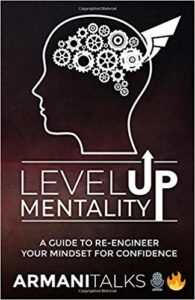Outlining a Speech with the Tree Method
You have a speech coming up.
Now what?
Before diving straight into the speech, create an outline.
‘Um…how?’
Through mother nature.
There are plenty of methods to outline a speech.
I want to introduce you to my tree formula.
This makes speech building a piece of cake.
With this framework, outlining a speech is fun, rather than a stressful process.
Bring your tree to life and your audience will be able to resonate with your big idea.
You are the star of the show on speech day.
Dominate center stage!
Components of a Tree
Let’s make this interactive. What are the parts of a tree?
‘Do you want me to go super detailed or general?’
General.
‘Trunk, branches, and leaves.’
Bingo.
These are the 3 variables we are going to focus on.
If you can jot these into your mind, then you have learned the components of the tree method.
Now let’s understand what each of these components mean in regards to public speaking.
How can we bring those components to life?
Using the Tree Method for Outlining a Speech
The trunk represents your main idea.
A tree does not have 5 trunks or 10 trunks.
It only has one.
Likewise, your speech should not have 5 ideas or 10.
Instead, just 1 big idea.
What is the purpose of your talk?
Try to say it in one line.
You will have difficulty compressing the purpose of your talk into 1 line at first. All good.
Just have a general aim to get started.
The more you keep polishing your speech and working on the branches and leaves, the more the trunk will present itself.
Just know that we are looking for ONE trunk.
Branches are the supporting points.
The branches hang off the trunk.
Therefore, your supporting points need to move your main idea forward.
Otherwise, you ramble.
Don’t worry, I’m going to be giving a real-world example shortly for outlining a speech.
Just know what I’m talking about with the supporting points.
It should be helping make the main idea of your speech, clearer and clearer in the mind’s eye of the audience.
The leaves hang off the branches.
These are the sub-points.
The purpose of the leaves is to make the supporting points move forward.
So, there you have it.
- Trunk = Main idea.
- Branches = Supporting points.
- Leaves = Sub points.
Creating a Speech with the Tree Method
Let’s say I want to speak about “mumbling.”
Mumbling is very general.
If I want to throw a workshop on mumbling, then I can talk about this topic for hours.
Some speakers do that.
They will throw a week-long workshop addressing all the issues regarding mumbling.
But let’s say we only want to do a 10-minute speech.
Then we need to get more targeted with our trunk.
Let’s say I know my audience very well.
The event is going to have introverted entrepreneurs.
Then my trunk will be:
‘My speech will help introverted entrepreneurs overcome mumbling to present their ideas with more clarity in networking events.’
That’s a targeted trunk right there.
Now I have something to hang my branches off!
What are some smart branches to include?
Hm….
Branch 1: Why do you mumble?
Branch 2: How to stop mumbling.
Branch 3: How to make sure the entrepreneurs practice the solution long term.
3 potential branches.
Notice that we are not going super detailed.
This is us just outlining the speech.
Now, let’s think of some leaves.
Branch 1: Why do you mumble?
Leaf 1: Fear of speaking up.
Leaf 2: Tired after a long day.
Branch 2: How to stop mumbling.
Leaf 1: Read a book out loud.
Leaf 2: Record yourself.
Leaf 3: Listen to the tapes back.
Branch 3: How to implement the solution long term.
Leaf 1: Remind yourself of 10 setbacks that mumbling is causing in your personal and professional life.
Leaf 2: Create a schedule to practice your speech exercises.
Leaf 3: Have an accountability buddy.
There you have it.
A rough speech outline to add clarity to your big idea.
The Money is in the Polishing
In the tree outlining method, I am not committing to anything.
I just got my ideas from my mind to the paper.
Any idea can be cut or added on.
Maybe I want to take away a leaf or two from branch 3.
Maybe I want to add in a branch 4.
Who knows… maybe I want to get even clearer for my trunk.
What I did with the speech outlining process was that I gave myself legs to stand on.
As a newbie speaker, it’s easy to view the creation process as being stuck in a category 5 hurricane.
You’re being blown from one idea to the next.
Plenty of speakers start off planning the leaves before they even have a clue what their trunk is!
The lack of knowledge is leading to overthinking and underdoing.
Our framework of starting with the trunk gets us to feel confident in the creation process.
We can now create with intent rather than create like a wuss.
Outlining is for thinking out loud, structuring ideas, and moving ideas around.
As you practice the speech, you will notice certain elements that you didn’t consider and can add them on.
Or other times, you will remove ideas.
How to Begin Outlining your Speech
‘Armani, should I type or handwrite the outline?’
It doesn’t really matter.
The tree framework works for both typing and handwriting.
I do both depending on the mood that I’m in.
Typing allows you to play around with ideas faster.
While writing allows you to feel more engaged.
Having a whiteboard is another option.
Don’t sweat what vehicle you use.
The point is that you do it.
Try out this challenge.
Create a 7-8 minute talk.
- Find a topic that you are well versed in so you don’t have to do too much research.
- Find your trunk.
- Include 1-3 branches and 1-3 leaves.
- Deliver the speech in a way to make me competent in your field.
Assume that I know nothing about your trunk.
This challenge will get you doing rather than thinking.
Solidify that tree structure once and you simply won’t be able to unsee it.
The Art of the Speech
Public speaking is fun when there are frameworks to reference.
Rather than winging it, you now have a mental model that will lead to tangible benefits.
Give your ideas some structure and allow them to spread in the minds of the audience.
A great outline serves as a map.
When you are the speaker, you can get lost in the forest real quick.
So with a simple outline, it becomes a process of standing in the tower looking down at the forest, rather than spinning in circles.
Just a trunk, branch, and some leaves are what it takes to create a speech.
These 3 variables will have you creating content like a true idea machine.
Want more practical insights like today’s article for public speaking?
Then look no further.
Check out the Speaking Wizard, A Magical Look into the World of Public Speaking.
You will learn:
- How to manage speech anxiety.
- Craft a stellar speech.
- Practice with poise.
- Deliver your talk with warmth and charisma.
Get the Speaking Wizard






